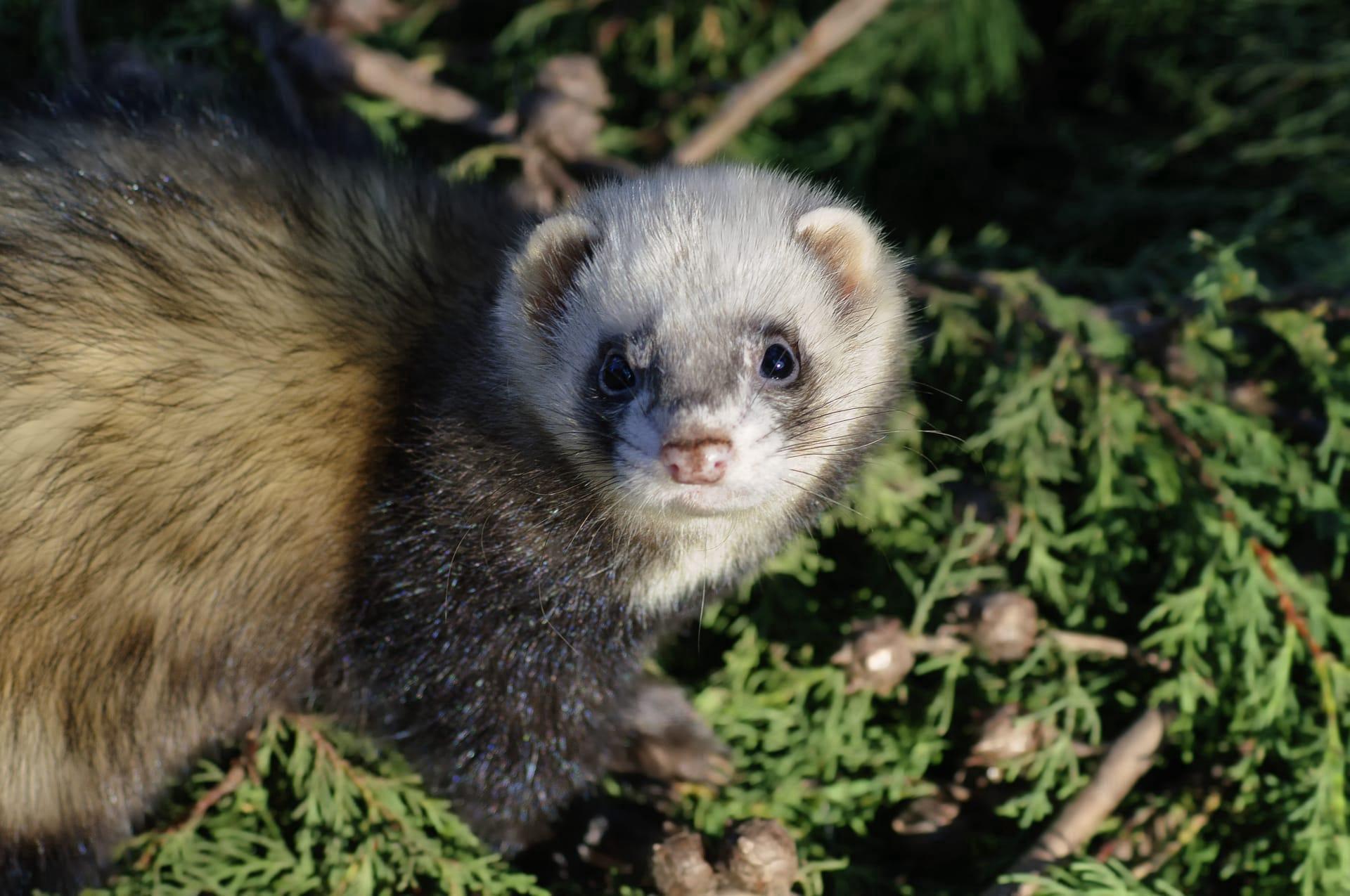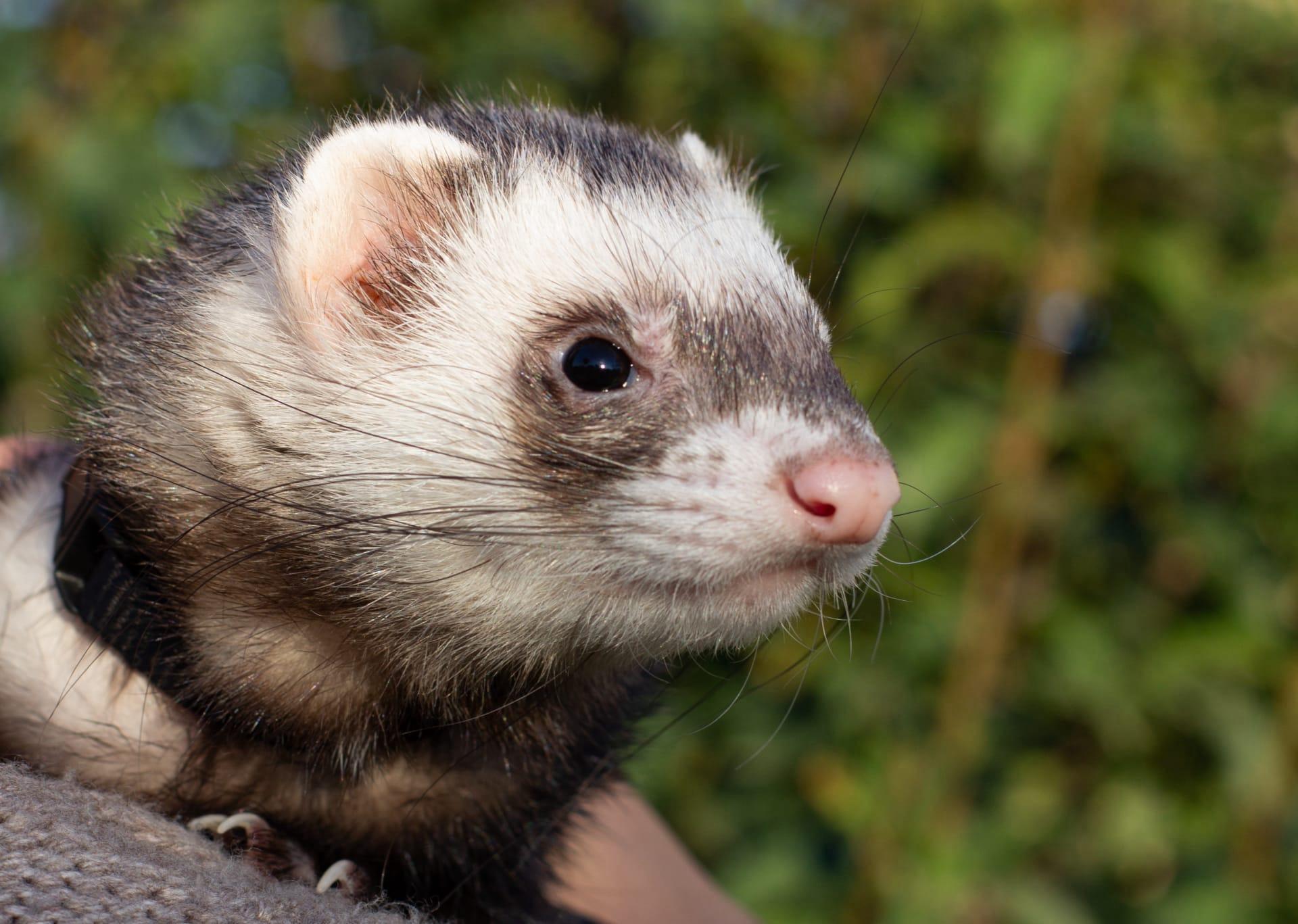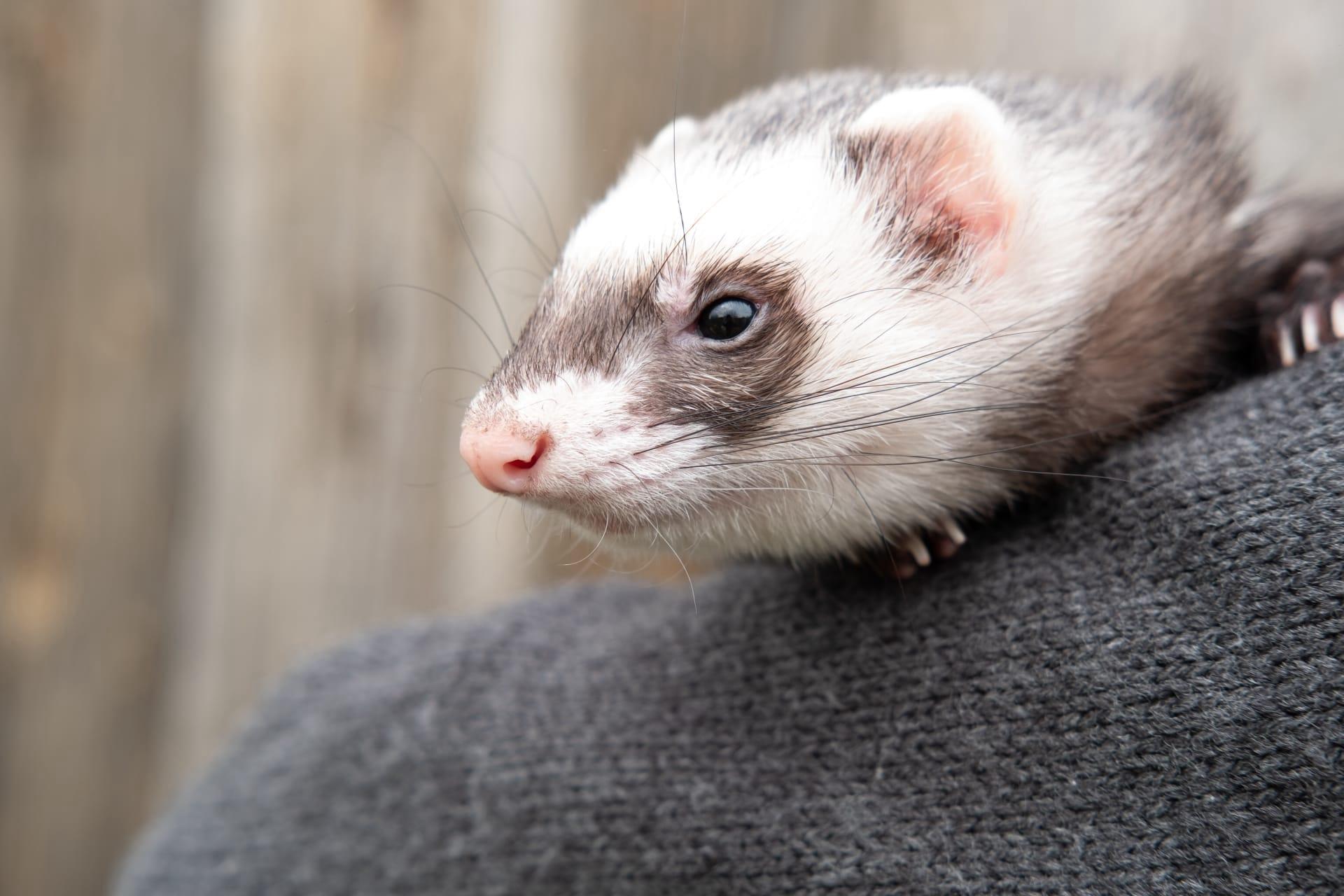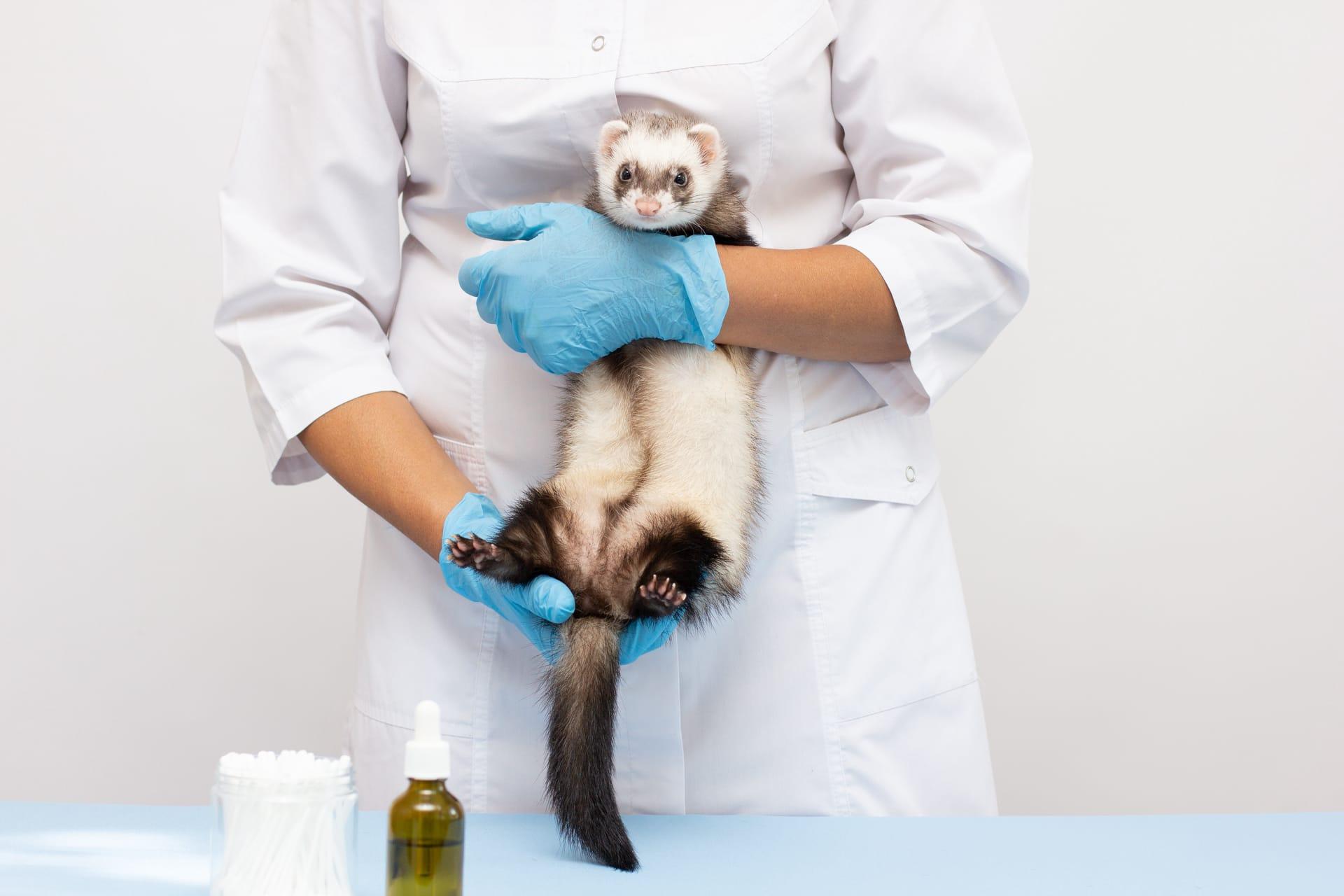Ferret
- Home /
- Mini Encyclopedia /
- Animal /
- Ferret
1
Ferrets, known scientifically as Mustela putorius furo, are small, carnivorous mammals belonging to the weasel family, Mustelidae. This species is a domesticated form of the European polecat. In terms of classification, ferrets are closely related to polecats and minks, sharing similar physical traits and behaviors. Their distinctive features include a long, slender body, a short coat, and a masked face, often with a combination of brown, black, white, and sometimes albino fur. Ferrets have been domesticated for over 2,000 years, initially for hunting purposes due to their adeptness at navigating narrow spaces.
Ferrets have a global presence, primarily due to their popularity as pets and their use in hunting and rodent control. Originally, they were native to Europe but have since been introduced to other continents, including North America and parts of Asia. In the wild, ferrets are quite rare, with most living in human care. They thrive in a variety of environments, from urban areas to rural settings, adapting well to human presence. However, it's crucial to note that in some places, like New Zealand and California, ferrets are considered invasive species and their ownership is either regulated or prohibited.

2
Question: Are ferrets nocturnal animals?
Answer: A common misconception about ferrets is that they are strictly nocturnal. In reality, ferrets are crepuscular, meaning they are most active during dawn and dusk. This behavior stems from their wild ancestors who found these times optimal for hunting, avoiding both the fierce competition of the day and the dangers of the night. Ferrets in domestic settings often adapt to the schedules of their human companions, showing flexibility in their active hours. They typically spend 14 to 18 hours a day sleeping and are playful and active during their waking hours.

3
Ferrets have evolved a range of survival strategies that make them successful both in the wild and as domestic pets. One key strategy is their flexible diet. Being carnivores, they primarily consume meat, but can adapt to a variety of protein sources. In the wild, their diet consists of small mammals, birds, and occasional insects. Domestic ferrets are often fed high-quality ferret or kitten food, which provides the necessary nutrients for their active metabolism.
Another survival strategy is their social behavior. Ferrets are social animals, often thriving in groups. This social nature is beneficial for hunting and protection in the wild. In domestic settings, they form strong bonds with their human caregivers and can also live harmoniously with other ferrets, displaying playful and interactive behaviors. This adaptability to different social environments highlights their intelligence and sociable nature.

4
In the ecosystem, ferrets play a role as both predators and prey. As predators, they control the population of smaller animals like rodents, helping to maintain a balance in their habitats. This predatory role is crucial in environments where rodent populations can become problematic, such as in agricultural settings.
As prey animals, ferrets contribute to the food chain. They are preyed upon by larger mammals and birds of prey, which helps to control their population and maintain ecological balance. In some regions, the presence of ferrets is critical for the health of the ecosystem, as they indirectly support the survival of these larger predators.

5
Film: "Ferret Nation" (USA, 2007) is a documentary that delves into the unique world of ferrets and their enthusiasts in America. It showcases the quirky and passionate subculture of ferret owners, including their challenges and joys. The film explores the bonds between ferrets and their owners, shedding light on why these creatures are cherished pets.
Book: "Ferrets for Dummies" (USA, 2007) by Kim Schilling offers a comprehensive guide on ferret care. This book covers everything from ferret biology and behavior to health care and nutrition, making it an invaluable resource for both new and experienced ferret owners.
Book: "The Ferret Handbook" (UK, 2004) by Gerry Bucsis and Barbara Somerville provides an in-depth look into the world of ferrets. This book discusses ferret history, characteristics, and how to provide the best care, including insights into ferret psychology and behavior. It's an essential guide for anyone interested in understanding and caring for these playful and curious animals.